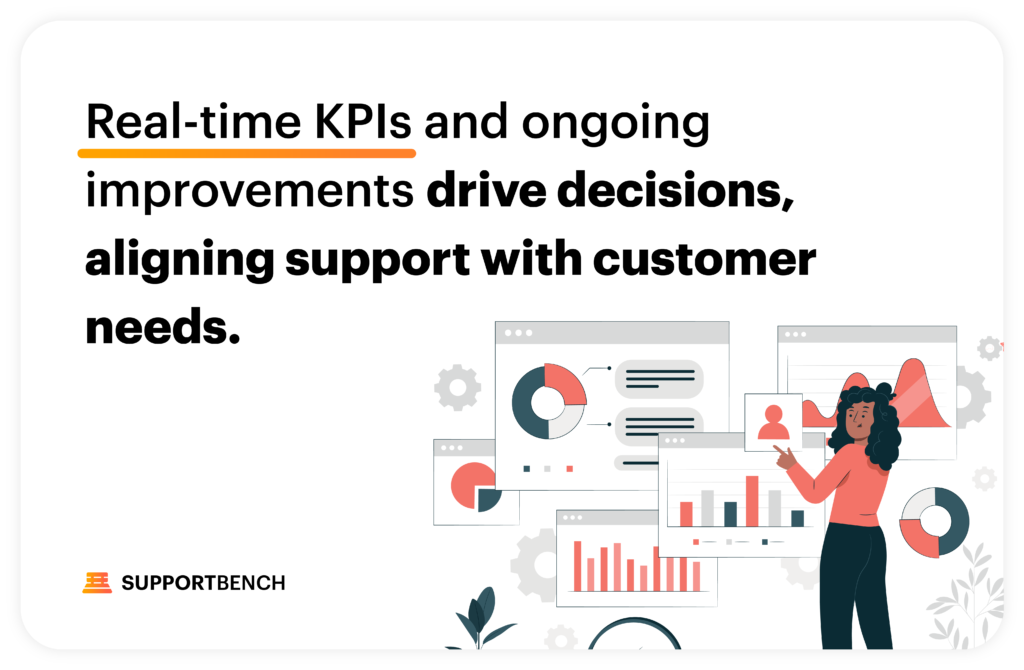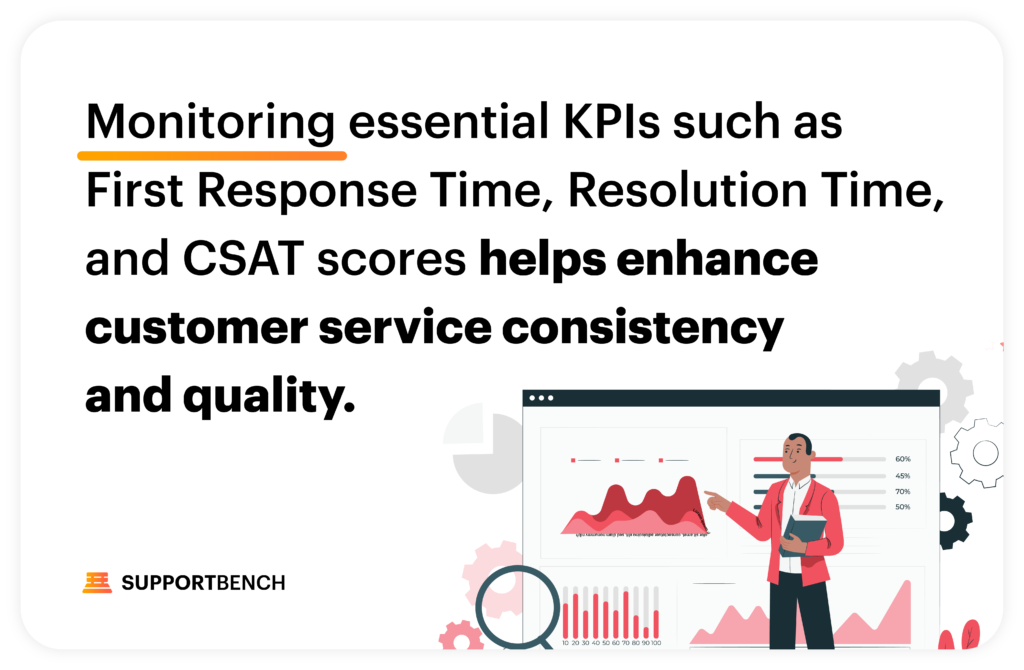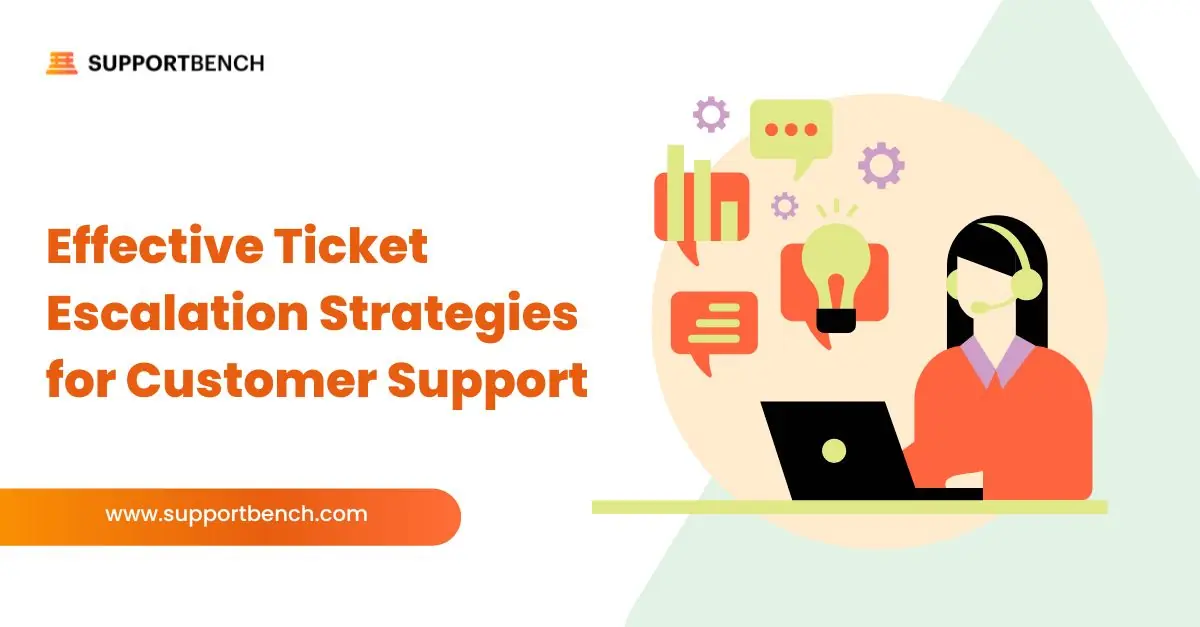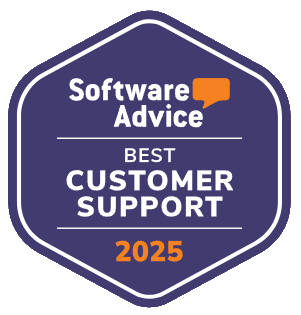Customer support is the cornerstone of any successful business, particularly in the B2B enterprise space. While this might seem like a sweeping statement, the reality is that a business’s reputation is often built or broken on the back of its customer support.
To ensure a high standard of customer support, one strategy that stands out is the monitoring of Key Performance Indicators (KPIs). Regular analysis and monitoring of KPIs can bring about real-time insights, facilitate continuous improvement, and enable informed decision-making. So, how can we use these KPIs to maintain consistency in customer service and create exceptional customer experiences?
Real-Time Insights

With the growing demands of customers, waiting for a quarterly review to identify and rectify issues simply doesn’t cut it. This is where real-time monitoring of KPIs comes into play. It provides an ongoing picture of how your support team is performing, enabling you to identify any inconsistencies promptly and take swift action.
For instance, monitoring First Response Time can offer immediate insights into your team’s responsiveness. A sudden increase could indicate an issue requiring immediate resolution. It might be an indication that the team is understaffed or overburdened with an unusually high ticket volume. Without real-time monitoring, this valuable insight might be missed, leading to prolonged customer wait times and a negative customer experience.
Continuous Improvement
Just as the name suggests, continuous improvement involves an ongoing effort to improve products, services, or processes. In the context of customer support, it means continually finding ways to enhance the customer experience and deliver better support.
By consistently analyzing KPIs like resolution time, ticket backlog, and agent utilization, your team can pinpoint areas that require improvement. Is the resolution time too long? Perhaps your team needs additional training or more effective tools. Is the ticket backlog increasing? Maybe you need to consider adding more staff or improving processes to handle requests more efficiently.
This kind of data-driven approach allows you to keep refining your support processes, align them with customer expectations, and maintain a high standard of service[^1^].
Informed Decision-Making
The importance of making data-informed decisions cannot be overstated in today’s business environment. KPIs provide valuable data that support leaders can use to make decisions about staffing, training, and resource allocation.
For example, monitoring the agent utilization KPI can help determine if your team is understaffed. If your agents are consistently overutilized, it might be time to consider hiring additional staff to avoid burnout and ensure that customer requests are handled promptly and efficiently.
Similarly, low Customer Satisfaction (CSAT) scores or Net Promoter Score (NPS) might indicate a need for additional training or a reevaluation of your customer service policies. With accurate KPI data at your disposal, you can make decisions that ensure your team is well-equipped to maintain consistent customer service.
Essential Customer Service KPIs to Monitor

So, what are some of the essential KPIs that your support team should monitor?
First Response Time
First Response Time (FRT) is the time it takes for a customer to receive the initial response to their request. Customers expect quick responses, and consistently high FRT could indicate a need for more staff or improved efficiency.
Best Practice: Measure the FRT from the moment a customer submits a request until they receive the first response. This should be averaged over a set period (such as a week or month) for a more accurate picture.
Pros: Monitoring FRT can help identify bottlenecks and improve service efficiency.
Cons: FRT doesn’t take into account the complexity of a request. Responding quickly shouldn’t take precedence over solving the issue correctly.
Example: If a company’s FRT average is 30 minutes, but the industry standard is 15 minutes, it’s clear there is room for improvement.
Resolution Time
Resolution time measures the average time it takes to resolve a customer’s issue. Longer resolution times could point to a need for additional training or more efficient problem-solving tools.
Best Practice: Track the time from the initial ticket submission to its resolution. It’s beneficial to categorize tickets by complexity or issue type to obtain more detailed insights.
Pros: Monitoring resolution time can improve efficiency and customer satisfaction.
Cons: Like FRT, resolution time may not accurately reflect the complexity of certain issues.
Example: If your resolution time for technical issues is significantly longer than for billing issues, it might indicate a need for more technical training or resources.
Customer Satisfaction (CSAT) Scores
CSAT scores measure how satisfied customers are with your service. Low scores can provide an early warning of potential problems with your service[^3^].
Best Practice: Use post-service surveys to measure CSAT. Aim to make them short and straightforward to increase completion rates.
Pros: CSAT is a direct measure of how well your support meets customers’ expectations.
Cons: It’s subjective and depends on customers’ mood and personal biases.
Example: If your CSAT score is 70% but your competitors average 90%, it may signify that your customer support needs improvement.
Other Essential KPIs
Beyond the primary metrics mentioned above, here are a few additional essential KPIs critical for maintaining consistency in customer support:
Customer Effort Score (CES)
CES measures the amount of effort a customer must exert to get their issue resolved. Lower scores generally indicate an easy, seamless customer experience[^3^].
Best Practice: Use post-interaction surveys to measure CES. The survey can be as simple as asking, “How easy was it to get your issue resolved?”
Pros: CES can help identify pain points in your customer service process that may not be evident through other metrics.
Cons: It’s highly situation-dependent and may not reflect the overall quality of your customer service.
Example: If your CES is high (meaning customers are exerting significant effort), it might indicate that your service processes are too complex or cumbersome.
Churn Rate
This measures the rate at which you’re losing customers. A high churn rate might indicate a problem with your customer service or product.
Best Practice: Monitor churn rate monthly and correlate it with changes in your customer service practices or product offerings.
Pros: Churn rate can serve as an early warning system for potential problems.
Cons: Churn rate can be influenced by factors outside of your control, such as competition or market changes.
Example: A sudden increase in churn rate might be an indicator of an issue with a recent product update or a sign of increased competition.
Customer Lifetime Value (CLV)
CLV is a prediction of the net profit attributed to the entire future relationship with a customer. By increasing CLV, you’re effectively increasing the profitability of your company over the long term.
Best Practice: CLV should consider not only the revenue generated from the customer but also the costs associated with servicing them. It’s beneficial to compare CLV with the cost of acquiring a new customer (CAC).
Pros: CLV can guide decisions around customer retention efforts and marketing spend.
Cons: It’s a complex metric to calculate accurately, and its predictive nature means it’s not always perfectly reliable.
Example: If your CLV is lower than the industry average or than your CAC, it could indicate that you’re spending too much on customer acquisition compared to the value those customers bring.
Ticket Backlog
The ticket backlog KPI measures the number of unresolved customer requests. A growing backlog could indicate an understaffed team or inefficient processes, leading to slower response and resolution times.
Best Practice: Measure your ticket backlog daily and correlate it with factors such as staffing levels, issue complexity, or service disruptions.
Pros: Backlog tracking can prevent service issues from spiraling out of control and help in resource allocation.
Cons: A smaller backlog isn’t always better, as it could indicate that tickets are being closed prematurely without adequately resolving the customer’s problem.
Example: If your backlog grows whenever a particular agent is on vacation, it could suggest that your team is overly dependent on that agent.
Agent Utilization
This KPI measures how busy your agents are. High agent utilization can lead to burnout and increased turnover, while low utilization might indicate inefficiency or overstaffing.
Best Practice: Keep track of both the total workload and the distribution of work among agents. Consider the complexity and nature of tasks when measuring utilization.
Pros: Agent Utilization helps maintain a healthy workload and prevents burnout.
Cons: It could be misleading if not adjusted for the complexity of tasks. Higher utilization isn’t always better.
Example: If agent utilization is consistently high, it could suggest a need to hire more support staff or streamline processes.
Monitoring and analyzing these KPIs can help your support team maintain consistency, continuously improve, and deliver exceptional customer service that meets and exceeds customer expectations in the B2B enterprise space. Remember, what gets measured gets managed, and in the realm of customer service, that management can be the difference between success and failure.
In Summary
In the world of B2B enterprise support, consistency is king. Customers expect not just a one-time resolution, but an ongoing, reliable, and high-quality experience. By leveraging the power of KPIs, you can ensure that your customer support not only meets but exceeds these expectations, driving customer satisfaction and loyalty to new heights.
So, start monitoring those KPIs today, because the path to outstanding customer service and a standout reputation in your industry might just be a metric away.















